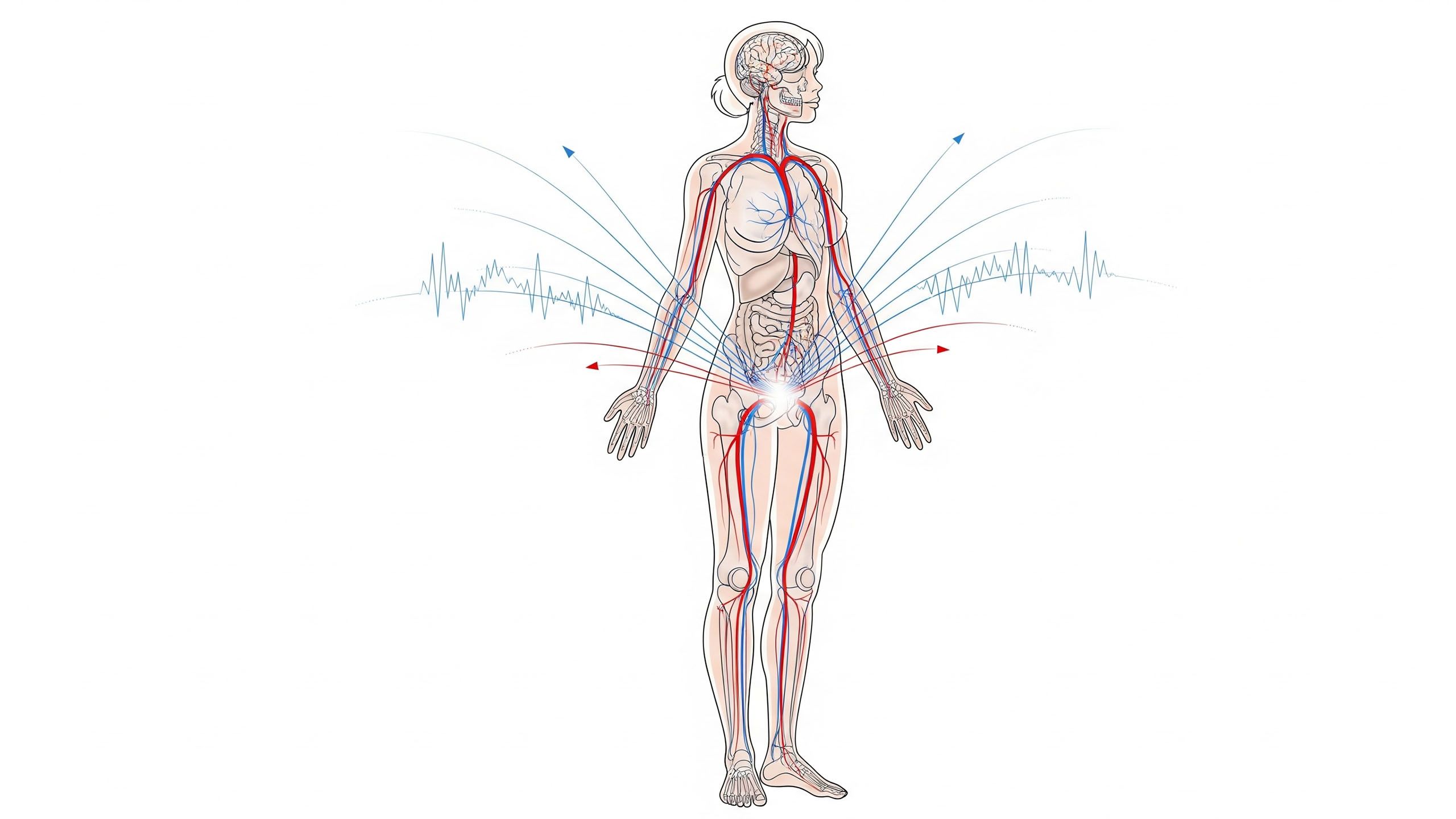A World of Pleasure: Exploring Intimacy and Joy

Intimacy and pleasure are universal human experiences, yet the ways we express and seek them vary greatly across the globe. By looking at how different cultures approach physical and emotional connection, we can find new ways to understand and enjoy our own bodies and relationships.
This article explores a few examples of pleasure practices from around the world, offering a glimpse into the many paths to joy.
The Japanese Practice of Shibari
Beyond its striking visual form, Shibari is a Japanese art of rope bondage that is rooted in a philosophy of connection and communication. The goal is not just restriction, but a deep exploration of trust, sensation, and control. In this practice, the person being tied (the "rope bunny") surrenders control to the person tying (the "rigger"). This act of surrender can be incredibly freeing, allowing for a focus on the sensations of the ropes, the weight of the body, and the rhythm of breathing. The communication between partners is key, with nonverbal cues and spoken words guiding the experience. It's a practice that emphasizes patience and mutual respect, turning what might seem like a simple knot into a profound act of connection.
Tantra's Focus on Mindful Connection
Tantra is an ancient practice originating in India that approaches intimacy as a path to spiritual and physical union. Unlike a quick or purely physical encounter, Tantra encourages a mindful and slow approach. It emphasizes the importance of breath, eye contact, and presence. Partners are encouraged to be fully present with each other, focusing on the moment rather than a specific outcome. Through practices like deep breathing and prolonged eye gazing, individuals can expand their capacity for sensation and connection. The aim is to create a sustained, flowing energy that allows for a deeper and more complete experience of intimacy.
The Danish Art of Hygge
While not strictly a practice of physical pleasure, Hygge (pronounced "hoo-gah") is a core concept in Danish culture that is about creating a feeling of cozy contentment and well-being. This sense of warmth and comfort can profoundly influence our capacity for intimacy. Hygge is about appreciating the simple things: a warm blanket, the soft glow of a candle, or the shared quiet of a rainy afternoon. When we cultivate a sense of safety and comfort in our daily lives and surroundings, we become more open to vulnerability and connection. This foundational feeling of well-being can make it easier to relax into intimate moments and to share ourselves with others.
Communal Pleasure in the Moche Culture
The Moche people of ancient Peru are known for their remarkable pottery, much of which depicts intimate acts with an astonishing level of detail and frankness. These vessels, often found in burial sites, suggest a culture that viewed intimacy as a natural and accepted part of life. What's unique is the communal context. These depictions were not hidden away; they were part of everyday life and ritual, suggesting that pleasure was not a private or shameful act, but one that was integrated into the community's worldview. This openness stands in stark contrast to many modern cultures that often relegate conversations about pleasure to hushed tones and private spaces. The Moche offer a lesson in accepting and celebrating the human body and its functions without judgment.
The Taoist Art of Loving
In ancient China, Taoist philosophy views the body as a network of energy channels, and intimate relationships as a way to balance and circulate this energy. Taoist lovemaking focuses on prolonged, gentle contact rather than intense, rapid climax. The goal is to conserve energy and allow it to flow through the body, nourishing the organs and enhancing vitality. This is achieved through breath control, gentle movements, and sustained presence. The practice is less about a single explosive moment and more about a continuous, flowing exchange of energy, leading to a feeling of deep satisfaction and inner calm.
The Art of Kissing in Iran
In a country where public displays of affection are often restricted, the art of kissing has become a nuanced and meaningful private practice. Traditional Persian poetry and art often describe the kiss not just as a physical act but as a spiritual exchange. It's an expression of deep love, trust, and vulnerability. The focus is on the quality of the moment, the connection of lips, and the soft exchange of breath. This emphasis on the intimate, private nature of the kiss highlights how even a seemingly simple act can be imbued with profound meaning and serve as a cornerstone of an intimate relationship.
The African Maasai and the Power of Touch
For the Maasai people of East Africa, physical touch is a fundamental part of social life, extending far beyond romantic relationships. Men and women often hold hands, and children are in constant physical contact with their mothers and community members. This communal and frequent touching creates a foundation of comfort and safety. Within intimate relationships, this baseline of physical closeness can lead to a more relaxed and natural expression of affection. The comfort with touch from a young age can make physical intimacy feel less like a special event and more like a normal, comforting part of life.
The Hawaiian Practice of Ho'oponopono
While not a physical practice, Ho'oponopono is a traditional Hawaiian philosophy of reconciliation and forgiveness that is essential for a healthy intimate relationship. It's a practice of clearing and releasing grudges and negative feelings. The simple, four-part mantra—"I'm sorry," "Please forgive me," "Thank you," and "I love you"—is used to address conflicts and to find inner peace. By regularly practicing forgiveness and acknowledging the other person's humanity, partners can remove emotional barriers and create a clean slate for connection. This creates an emotional space where intimacy and pleasure can truly flourish, free from resentment and past hurts.
Finding Your Own Path
These examples from Japan, India, Denmark, Peru, China, Iran, East Africa, and Hawaii offer a look into the many ways cultures approach intimacy and pleasure. From the controlled surrender of Shibari to the mindful presence of Tantra, and the cozy comfort of Hygge to the public acceptance of the Moche, each practice highlights a different facet of human connection. We can learn from these varied approaches, whether it’s through slowing down, being more present, or simply creating a more comfortable and accepting environment for ourselves and our partners. The key isn't to adopt a practice wholesale but to take lessons from them to explore what brings you and your partner joy and fulfillment. Ultimately, the most rewarding journey is the one you create for yourselves.
Questions & Answers
Q: Can a single person practice these concepts?
A: Absolutely. While many of these practices are described in a partner context, concepts like **Hygge**, **Taoist breathing**, or the mindfulness of **Tantra** can be practiced alone. The goal is to connect with your own body and find a sense of inner peace and joy, which are essential foundations for any relationship.
Q: Do I have to be in a committed relationship to explore these ideas?
A: Not at all. Many of these concepts, such as mindful presence, self-forgiveness, and the appreciation of simple comforts, are about personal well-being. They can be integrated into your life whether you are single or in a relationship. They help build a stronger connection with yourself, which is the first step to connecting with others.
Q: Are these practices meant to replace modern dating or intimacy?
A: No, these practices are not meant to replace anything. They are meant to offer a broader perspective and new tools. You can take elements from **Shibari**, **Tantra**, or **Ho'oponopono** and integrate them into your existing relationships and approach to intimacy in a way that feels right for you and your partner.
Disclaimer: The articles and information provided by the Vagina Institute are for informational and educational purposes only. This content is not intended to be a substitute for professional medical advice, diagnosis, or treatment. Always seek the advice of your physician or another qualified health provider with any questions you may have regarding a medical condition.


 English
English  Deutsch
Deutsch  Español
Español  Français
Français 




